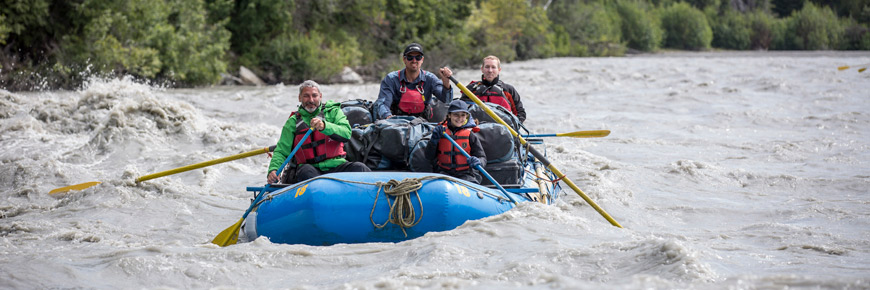
Hazards and safety
Kluane National Park and Reserve
The Alsek is a large volume, glacial river. The water is extremely cold, swift, and wide in many sections. The river also contains a number of rapids that must be negotiated. A number of injuries and deaths have occurred due to travellers underestimating the powerful flow and cold temperature of the water. Hypothermia and drowning are the two most common causes of death on the river.
River hazards
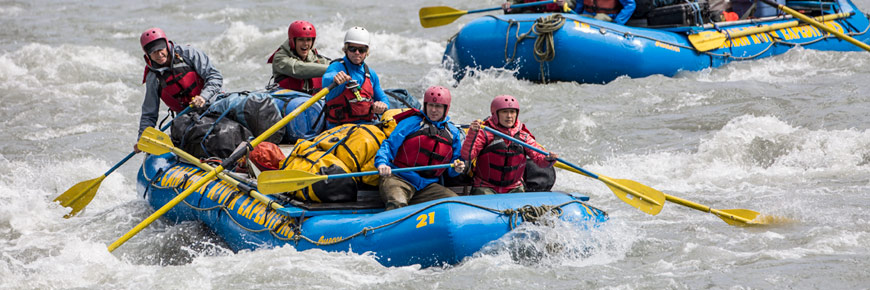
Cold water
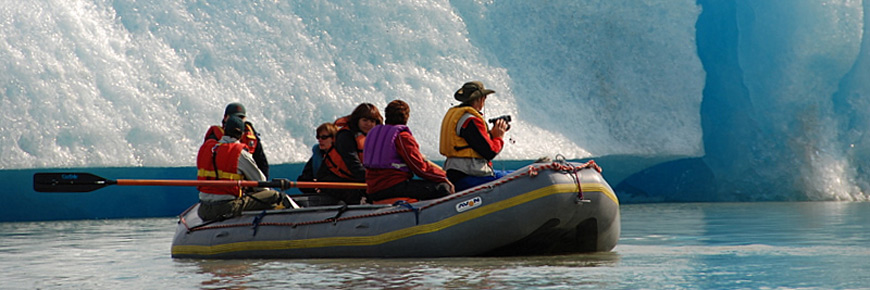
River water can be extremely cold, only a few degrees above freezing. Dry suits are strongly recommended in more difficult sections where capsizing could be fatal. Travellers must ensure they minimize the chances of capsizing and must be prepared for a long cold swim before they are rescued or are able to get themselves to shore.A rule to remember: Do not travel a section of river unless you are properly prepared to swim that same section.
Powerful rapids
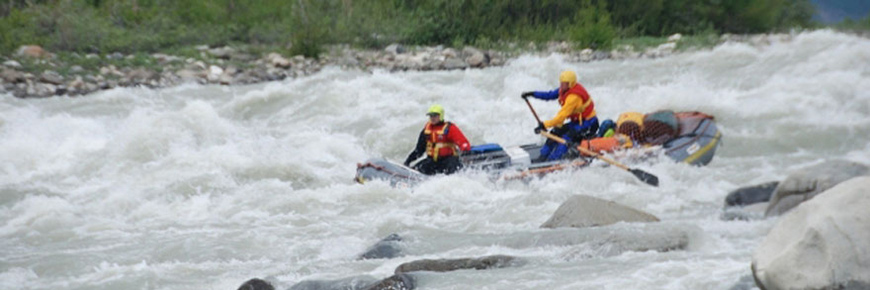
Lava Rapids
Large standing waves, rock gardens, holes, eddies, silty water and swift currents increase the difficulty of sections of the river. River travelers should be competent with Class III and IV rapids.Two sets of Class III-IV rapids below the Lowell Glacier should be scouted before running. A number of accidents have occurred at these two rapids. Groups may consider having the majority of the group walk along the shoreline downstream, with only a minimal number of occupants in the rafts. Paddlers should know exactly where these are prior to their trip as they are difficult to see while on the river. These rapids are located at approximately:
- Sam’s: UTM: 7V 0665400 E; 6674400 N (NAD 27) or 61º 10’ 29” N; 138º 01’ 06” E
- Lava: UTM: 7V 0666580 E; 6670500 N (NAD 27) or 60 º 08’ 21” N; 138 º 0’, 1” E
Turnback Canyon
Located in Tatshenshini-Alsek Provincial Park Turnback Canyon is a 7 km-long run of continuous class V-VI white water. A spilled raft or kayak invariably results in tragedy. Travelling through Turnback Canyon is not recommended. Travelers are advised to helicopter portage Turnback Canyon.
Rafters should begin looking for a landing spot soon after rounding a big left-hand corner at:
• UTM: 7V 667361 E; 6639253 N (NAD 27) or 59° 51' 30.70" N; 138° 00' 49.98 E"
Turnback Canyon point of no return is around:
• UTM: 8V 333736 E; 6635540 N (NAD 27) or 59° 49’ 32.45” N; 137° 58’ 04.88” E
NOTE: You must fly with a company licensed to land in Tatshenshini-Alsek Provincial Park. Please contact Tatshenshini-Alsek Provincial Park for more information.-
Ice floes
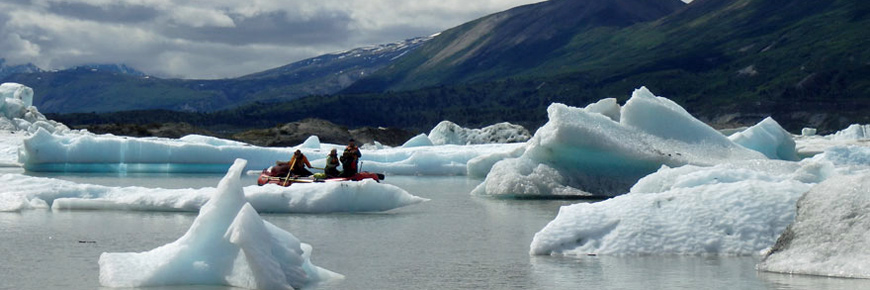
The Alsek River passes by the toe of the Lowell Glacier, and at times, large blocks of ice drop into the river and flow downstream. These ice blocks can be massive and may roll or break as they melt, crushing or capsizing a raft that is too near. Ice is also a hazard at Alsek Lake in Alaska, where several glaciers calve into the lake. -
Weather delays
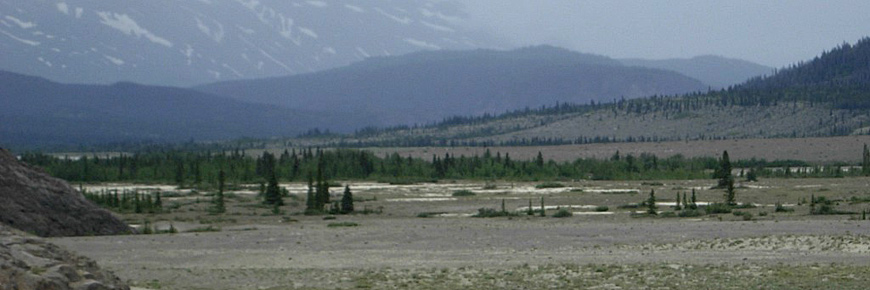
Bad weather may require extra days on the river or delay flights to and from Dry Bay. Be prepared to wait out delays with a supply of extra food.Wind
The Alsek flows through a broad open valley in a southerly direction, and is subject to strong south winds up to 100 km per hour. Be prepared to spend extra time battling the wind as well as silts and sands carried by the wind.
Equipment requirements
Boats
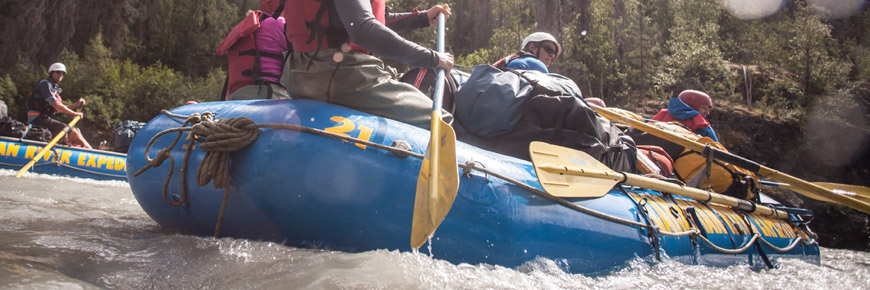
A minimum of two boats per party is recommended for safety.
- Four-metre or larger rafts in good operating condition are recommended
- Rigid kayaks and covered whitewater canoes with floatation are suitable only for paddlers experienced with Class III and IV rapids
- Folding kayaks and open canoes are not recommended.
Emergency equipment
All rafts with fixed floors must carry a bailing bucket and should pack emergency rescue gear in case of an accident, including:
- Throw bags
- Rescue rope and pulleys
- A comprehensive first aid kit
- Repair kit
- Spare paddles and oars
- Extra food for unexpected delays
Emergency equipment is only useful if easily accessible, you know how to use it and have practiced with it.
Personal gear

Personal floatation devices (PFD's)
Ministry of Transport regulations require that one approved PFD must be worn by each traveler. A Type III or Type V PFD is recommended, as they offer a greater amount of floatation.
Thermal protection
The air and water temperatures are cold, particularly when it's windy. Warm clothing that retains heat when wet is recommended.
- Synthetic fleece and wool layers are preferred to cotton
- Wearing dry suits with warm layers underneath is strongly recommended when negotiating rapids
Helmets
Whitewater helmets are recommended for all river travelers, especially when negotiating rapids.
Camping considerations
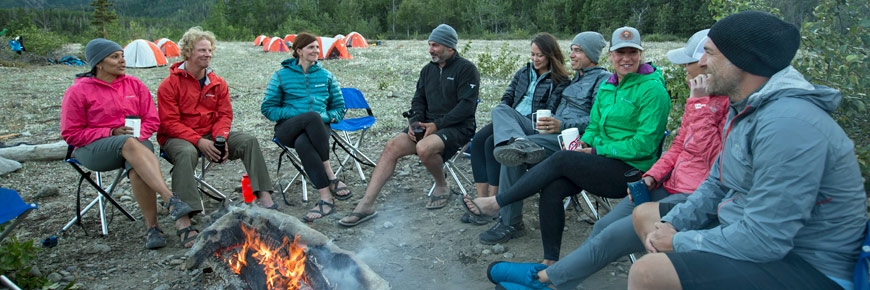
-
Bears and food
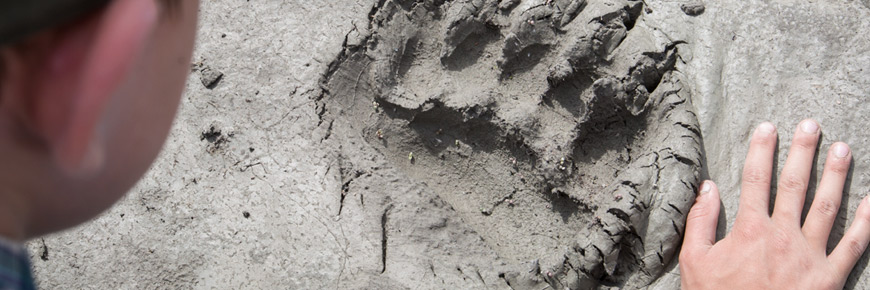
© Noel Hendrickson Extreme care must be taken when camping in grizzly bear territory. It is mandatory that all visitors ensure bears do not gain access to human food or garbage. The use of IGBC certified bear-resistant food containers or electric fences is required. Keeping campsites clean, handling food and garbage properly, and choosing campsites carefully, minimizes conflicts with bears.
Learn more
Bears in the Alsek River valley
You are in bear country -
Giardia

© Noel Hendrickson
River users should purify all water used for drinking and cooking by boiling for ten minutes or filtering with a less than 0.5 micron filter to avoid the intestinal parasite, giardia.Human waste disposal system
All human waste must be packed out of the Alsek Valley. Human waste disposal systems are available for rent from commercial suppliers. Please be sure to arrive at the park with an appropriate waste disposal system. A dump station is available at Dry Bay.
Campfires

© Noel Hendrickson Fire pans are required for campfires.
Camp stoves are recommended for cooking, since driftwood and deadwood are limited and difficult to obtain. Camp in the open as far away as possible from trails and features that limit visibility. Where possible, cooking areas should be located on the active floodplain so that they are periodically flooded and cleaned of lingering scents. Proper handling and storage of food and garbage are essential.
Emergencies
The Alsek is a remote wilderness river. Travellers must be entirely self-sufficient and able to handle any emergency situations on their own. In the event of an emergency you should be prepared for lengthy delays in search and rescue response times due to weather conditions and/or the availability of both aircraft and rescue personnel.
Satellite phones are the recommended form of communication. Other satellite GPS messenger devices, such as SPOT® or inReach®, are also effective. Cell phones do not work anywhere along the river corridor.
As the Alsek River flows through three parks, there is no single emergency contact number that is good for the whole river. It is important to know which number to call in the event of an emergency.
Kluane National Park and Reserve
24 hr emergency dispatch: 1-780-852-3100
Tatshenshini-Alsek Park and Glacier Bay National Park & Preserve
24 hr emergency dispatch: 1-907-697- 2651
- Date modified :